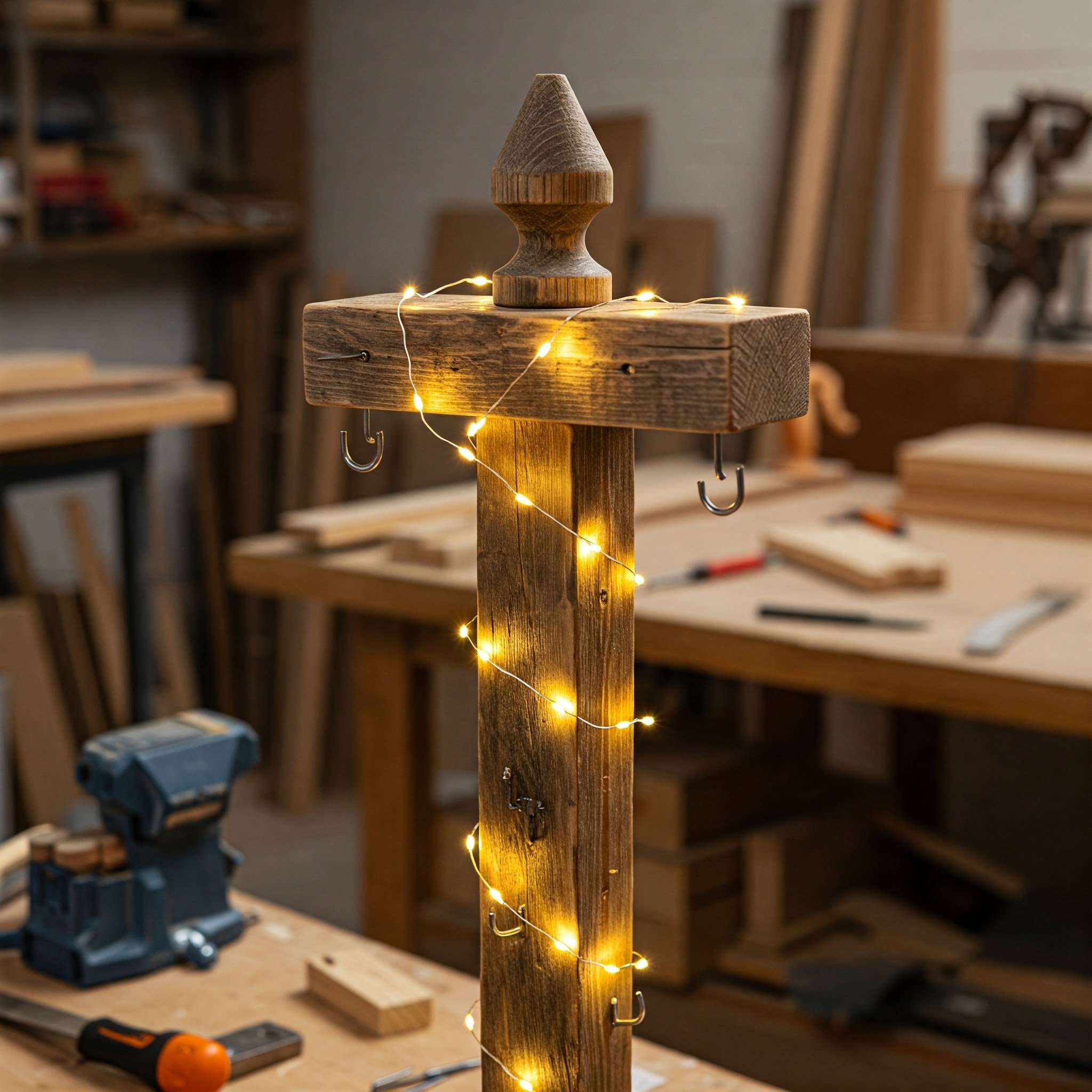How to Insulate a Shed: Step-by-Step Guide
Wondering how to insulate your shed for better temperature control? Discover an easy-to-follow step-by-step guide on how to insulate a shed, covering materials, techniques, and tips for optimal results.
If you're like many homeowners, you may have a shed in your backyard, ready to house your garden tools, outdoor equipment, or even serve as a home office or creative space. But whether you're using it as a workshop or a cozy retreat, insulation is key to making your shed comfortable year-round.
You might be wondering: how do you insulate a shed? The process is more straightforward than you might think, and with the right materials and a little time, you can transform your shed into a climate-controlled space that stays warm in the winter and cool in the summer.
This step-by-step guide will walk you through the basics of insulating your shed, from choosing the right materials to the proper installation techniques. So, let's dive right in and get that shed of yours ready for any weather!
Why Insulate a Shed? The Benefits
Before we jump into the details of how to insulate a shed, it’s important to understand why insulation is necessary. Insulating your shed offers a range of benefits, including:
1. Temperature Control
Without proper insulation, your shed can become unbearably hot in the summer and freezing cold in the winter, limiting its usability. Insulation helps regulate the internal temperature by keeping heat out during warmer months and retaining warmth in colder seasons. This simple upgrade ensures your shed remains comfortable and functional throughout the year, regardless of the weather.
2. Energy Efficiency
Insulating your shed not only keeps the temperature stable but can also save you money in the long run. If you’re using your shed as a workspace, it can help reduce the need for space heaters or air conditioners, cutting down on your energy consumption.
3. Noise Reduction
If you live in a noisy neighborhood or plan to use your shed as a hobby or workspace, insulation can significantly reduce external noise. By dampening sound, insulation creates a quieter, more peaceful environment inside, allowing you to focus on your activities without distractions. It’s a practical addition for enhancing comfort and functionality in your shed.
4. Protecting Your Belongings
Extreme temperatures can damage sensitive items like electronics, tools, or plants. By insulating your shed, you create a more stable environment that protects your belongings from heat and moisture damage.
Materials You’ll Need for Insulating a Shed
Now that we know why insulation is important, let’s take a look at the materials you’ll need to tackle the job. There are a few different types of insulation you can use, each with its own pros and cons.
1. Fiberglass Insulation
Fiberglass insulation is one of the most common materials used in shed insulation. It's affordable, easy to install, and provides excellent thermal resistance.
Pros: Cost-effective, readily available, and offers good insulation value.
Cons: Can be itchy to handle and may require protective gear.
2. Foam Board Insulation
Foam board insulation is a rigid material that’s great for areas that require high R-values (thermal resistance). It’s lightweight and offers good moisture resistance, which can be a huge plus if your shed is prone to dampness.
Pros: Provides great insulation, easy to cut and install.
Cons: More expensive than fiberglass insulation.
3. Spray Foam Insulation
Spray foam insulation is a high-performance option for insulating your shed. It expands as it is sprayed, filling gaps and cracks, providing an airtight seal.
Pros: Superior at sealing small gaps and cracks, high R-value.
Cons: Expensive and requires professional installation for best results.
4. Reflective or Radiant Barrier Insulation
Reflective insulation, also known as radiant barrier, works by reflecting heat away from the shed. It’s most effective in hot climates where reducing heat inside the shed is the primary concern.
Pros: Easy to install, reflects radiant heat away, lightweight.
Cons: Less effective in cold climates, doesn't provide as much thermal resistance as other materials.
5. Cotton or Denim Insulation
Made from recycled cotton or denim, this eco-friendly insulation option is biodegradable and provides a decent level of insulation.
Pros: Sustainable, safe to handle, non-toxic.
Cons: Less common and might be more expensive than traditional options.
Step-by-Step Guide: How to Insulate a Shed
Once you've decided on the materials, it’s time to start the installation process. Here’s a step-by-step guide to help you insulate your shed effectively.
1. Prepare the Shed
Before you begin, make sure the shed is clean and dry. Inspect the walls and roof for any cracks or holes that could allow moisture or air to seep in. If you find any gaps, seal them with caulk or expanding foam.
Checklist for Prep:
Sweep out debris and dirt.
Inspect for leaks and cracks.
Seal any gaps or holes.
2. Measure the Walls and Ceiling
Take accurate measurements of the walls and ceiling of your shed to determine how much insulation material you’ll need. Be sure to account for the height, length, and width of each surface you plan to insulate.
Tip:
It’s wise to purchase a little extra insulation material, especially when working with fiberglass or foam boards, as these may require trimming to fit precisely. Having additional material on hand ensures you won’t run short during the installation process and allows for adjustments or future repairs, making the project smoother and more efficient.
3. Cut the Insulation to Size
If you’re using fiberglass or foam board insulation, cut it to fit the measurements of your shed. Use a utility knife to carefully slice foam boards or a saw to trim fiberglass insulation. Be sure to wear gloves and a dust mask when handling fiberglass.
4. Install the Insulation
Now comes the fun part—installing the insulation! If you’re using fiberglass, you’ll need to push the batt insulation into the wall cavities, ensuring that it fits snugly without gaps. If you’re using foam boards, simply press them against the walls, securing them with adhesive or nails.
Step-by-Step:
Install fiberglass or foam board between wall studs.
Ensure the insulation fits snugly but doesn’t compress.
Attach it securely to the wall using adhesives, nails, or staples.
5. Install Vapor Barrier (Optional)
If you’re worried about moisture buildup, you can add a vapor barrier over your insulation. This is especially important if your shed is in a humid area or has a concrete floor. Use plastic sheeting or reflective insulation as a vapor barrier to prevent moisture from reaching the insulation.
6. Seal the Gaps
After installing the insulation, seal the edges and corners of the walls and ceiling with caulk or spray foam to close any gaps. This step is crucial for preventing air leaks, which can compromise temperature regulation. A properly sealed shed ensures better insulation performance, keeping it airtight, energy-efficient, and comfortable in all seasons.
7. Cover the Insulation (Optional)
If you’d like to give your shed a finished look, you can cover the insulation with plywood, drywall, or another material of your choice. This is optional, but it can help protect the insulation from damage and provide a more polished appearance.
Common Mistakes to Avoid
While insulating your shed may seem like a straightforward task, there are a few common pitfalls you’ll want to avoid.
Using the Wrong Type of Insulation: Make sure to choose insulation that’s appropriate for your climate and the structure of your shed.
Skipping the Gaps: Don’t neglect to seal any gaps or cracks; they can significantly reduce the effectiveness of your insulation.
Not Allowing for Ventilation: A sealed shed is great, but be sure to incorporate some ventilation to prevent moisture buildup, which can lead to mold or mildew.
Conclusion
Insulating your shed doesn’t have to be a daunting task. With the right materials, a little time, and a step-by-step approach, you can make your shed more comfortable, energy-efficient, and durable. Whether you use it as a workshop, a storage space, or even a small retreat, insulation is an important part of ensuring your shed is usable all year round.
Now that you know how to insulate a shed, it’s time to grab your materials and get started. With these tips in mind, you'll have a well-insulated space that stays cozy in the winter and cool in the summer!
Frequently Asked Questions
1. Can I insulate a shed myself?
Yes, you can definitely insulate your shed yourself, as long as you have the right materials and are willing to take your time. The process isn’t overly complicated, and there are plenty of DIY guides available to help.
2. How much does it cost to insulate a shed?
The cost to insulate a shed can vary depending on the size of the shed, the materials you choose, and whether you hire a professional or do it yourself. On average, materials could range from $100 to $500 or more.
3. What is the best insulation for a shed?
The best insulation for a shed depends on your needs. For colder climates, fiberglass or foam board insulation is a great option, while reflective insulation is ideal for warmer climates. Consider the climate, your budget, and how much space you need to insulate when choosing.
4. Is spray foam insulation worth it for a shed?
Spray foam insulation is a great option for its air-tight seal and high R-value, but it can be costly. If you’re looking for the best possible insulation, spray foam is worth considering, especially if you plan to use your shed year-round.
































